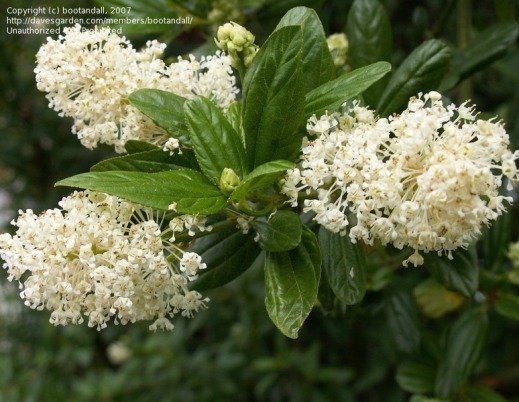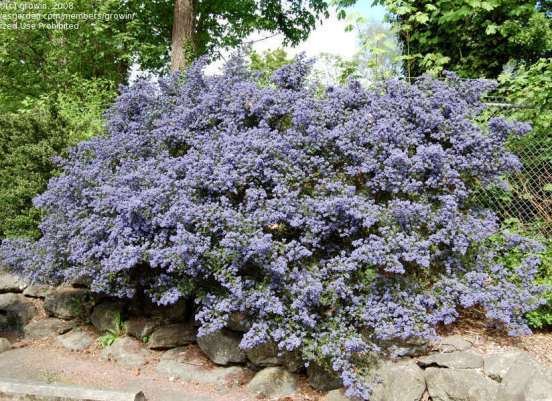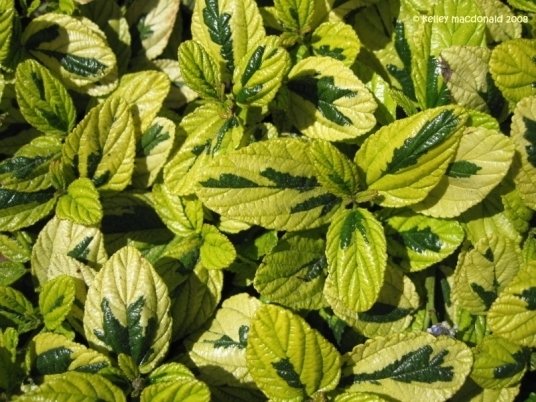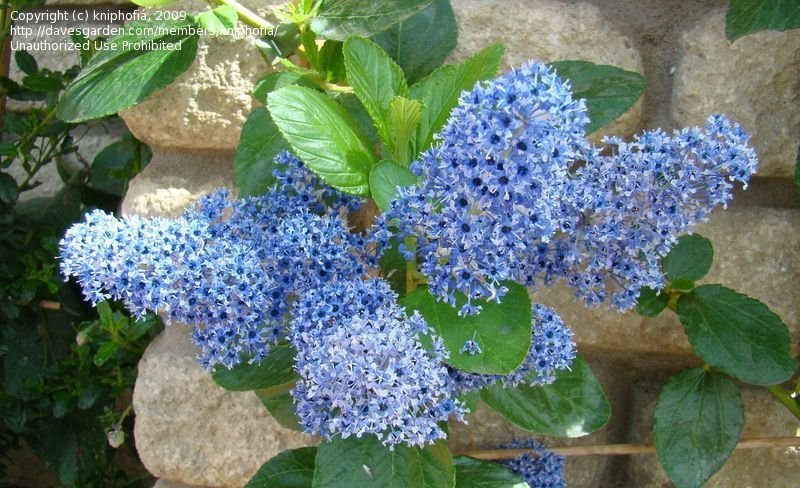





I thought I knew ceanothuses. Ceanothus is a genus of plants native to semi-arid western North America and especially the California chaparral. It is an unbridled wildling that would wither under civilized garden conditions. It was certainly not something I would have ever expected to see in stylish Paris, but there they were, blooming happily in planters along a street by the Seine. Clearly, there was more that I needed to find out about ceanothuses.
(Editor's Note: This article was originally published on May 25, 2011. Your comments are welcome but please be aware that authors of previously published article may not be able to respond to your questions.)
The genus Ceanothus is centered on California, with 41 of the 50 species found there, but that is only one dimension of the genus. Ceanothus americanus (New Jersey tea) is found in eastern and central North America, from southern Canada to Florida. Ceanothus herbaceus (inland Jersey tea) is native to central North America, from Montana and southeastern Canada to northern Mexico. Ceanothus caeruleus is a frost-tender plant native to Mexico and Central America. These three would become the basis of the first ceanothus cultivars.
Ceanothus americanus and Ceanothus herbaceus are both deciduous, cold-tolerant, and have white flowers and small leaves. Ceanothus caeruleus was desirable because it has larger evergreen leaves and blue flowers. However, it is not cold tolerant enough for most of Europe. C. americanus was crossed with C. caeruleus to produce a group of cultivars known as Ceanothus x delilianus (Delilianus hybrids). This resulted in plants that are hardy to USDA zone 8, with some hardier below. These varieties usually have blue flowers and large leaves for the genus and some are evergreen in warmer climates. C. x delilianus was crossed with C. herbaceus to produce plants with pink flowers, which do not occur in nature. Much breeding was done in the 19th century by French nurseries. Many of these cultivars are now lost, but of those that remain, 'Gloire de Versailles' is the best known.

Ceanothus 'Snow Flurry'
Photo courtesy of DG member "bootandall"
The British were the first to show a horticultural interest in the California species. The introduction of Ceanothus thyrsiflorus in 1837 and the collection of seeds of other species in the 1840s generated so much interest that William Lobb was sent to California specifically to collect ceanothus plants and seeds. From these, plants with the largest flower clusters, most attractive growth form, best garden tolerance, and other desirable characteristics were propagated and cross bred. In the 20th century, many beautiful British cultivars were produced including 'Blue Mound', 'Burkwoodii', 'Delight', 'Italian Skies' and 'Southmead'. The ceanothuses remain popular garden plants in Britain and enjoy much more popularity there than they have in the United States.

Ceanothus 'Puget Blue'
Photo courtesy of DG member "growin"
California nurserymen and nurserywomen began to show interest in the ceanothuses in the 20th century. Many rare wild subspecies and varieties were discovered and codified in the 1920s and '30s. The introduction of cultivars based on these and hybrids was prolific in the middle decades of the the 20th century. Classics like 'Concha' and 'Yankee Point' come from this era. New cultivars are still being introduced, with "Coronado" and 'Heart's Desire' being some of the more recent.
Ceanothuses are usually grown for their flowers, which can be various shades of true blue, pink, or white. In general, the cultivars have been selected with regard to flower color and inflorescence quantity and size. Some varieties may have a sweet fragrance. Ceanothus flowers are attractive to beneficial insects, including honeybees and they are a good honey producer. Most ceanothuses bloom in the spring, though a few cultivars will bloom or rebloom in the summer or fall. After blooming, the flowers are replaced by small fruits that turn an attractive red color as they mature.

Ceanothus 'Diamond Heights'
Photo courtesy of DG member "Kell"
The blooming season for most ceanothuses is not particularly long, but fortunately the plants have reasonably attractive foliage, especially cultivars with C. caeruleus, C. arboreus, or C. thyrsiflorus ancestry. However, on rare occasions, a branch that is a variegated sportwill turn up, and these have been propagated to produce cultivars with variegated foliage that is almost as showy as the flowers.
Ceanothus cultivars can be found in a variety of sizes and forms, from small trees to low ground covers. Growth form is usually upright, though some of the ground covers are sprawling. Plants are usually left in their natural shape, but they can be sheared into a formal hedge, espaliered, or trimmed like a small tree.
All of the cultivars are drought tolerant to one degree or another. They should have well-drained soil, though a few cultivars are tolerant of clay. It is usually recommended that the Californian cultivars receive no summer watering. The British and French cultivars would of necessity be more water tolerant. Specimens are usually planted in full sun but can be planted in part shade in the hottest climates.

Ceanothus 'Trewithen Blue'
Photo courtesy of DG member "kniphofia"
From my standpoint, the only shortcoming of the ceanothus cultivars is that they are not the most heat tolerant plants. I live in an area that can get very hot. The Californian cultivars were developed from species native to coastal central and northern California. Though rainless in the summer, those areas are drenched in summer fog and have some of the coolest summers in the lower 48 states. There are wild ceanothus species native to my area, but they were not used in the development of cultivars. I have tried "Concha", 'Yankee Point', 'Ray Hartman', and 'Dark Star' and none of then lived very long, even in part shade. I do not know if summer heat was the problem, but I think breeders are missing out on a market niche by not creating heat-tolerant cultivars.
I learned a lot in my research into the genus Ceanothus and especially about the cultivars. Yes, Ceanothus can be a wild vaquero, but it can also be a sophisticated princess. Though ceanothuses are a stranger to most Americans, they have been beloved in Europe. Plantsmen and -women have scoured the rugged California coast to find the most exceptional wild specimens to propagate. In other cases, crosses that could not have occurred in nature have resulted in diverse plants. I hope that you have learned something, too, and maybe now you have another plant to add to your "must have" list.
Copyright © www.100flowers.win Botanic Garden All Rights Reserved